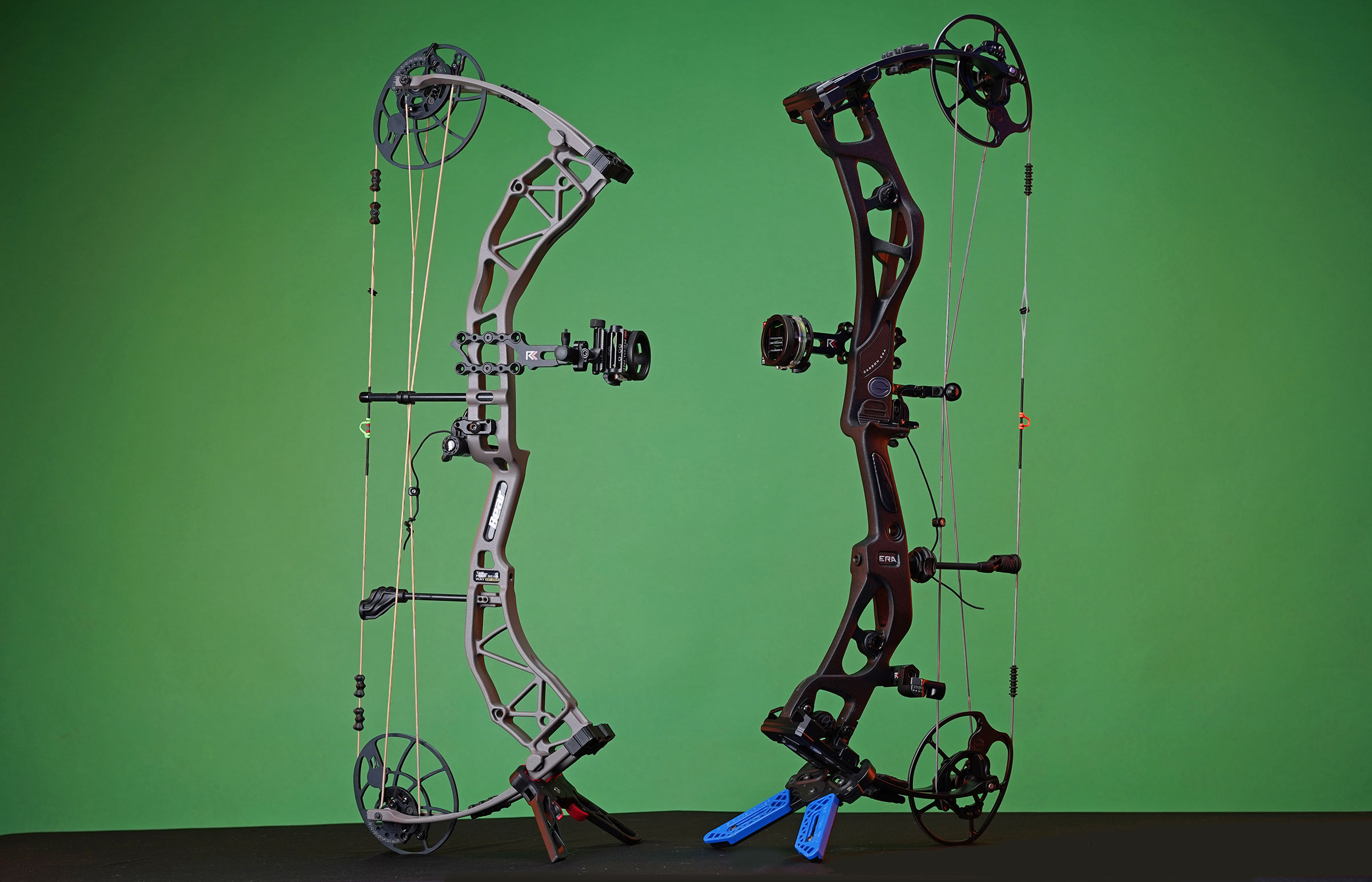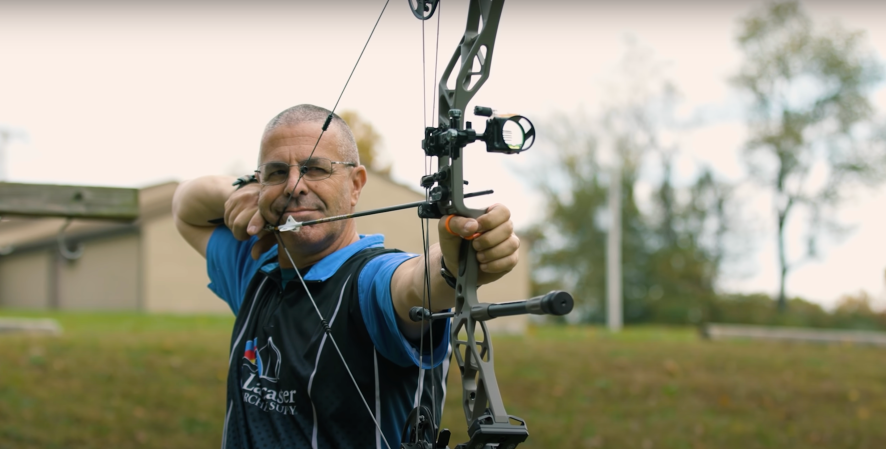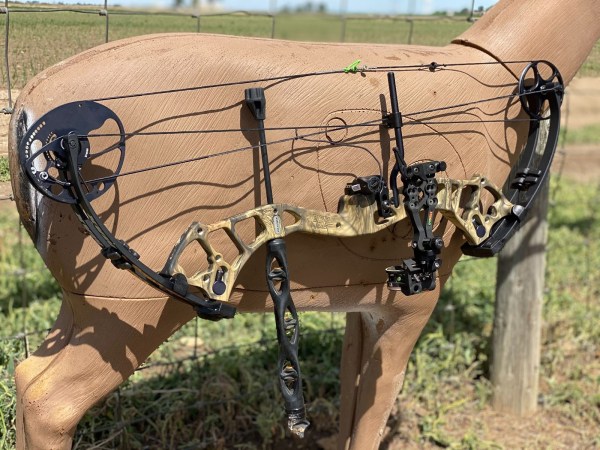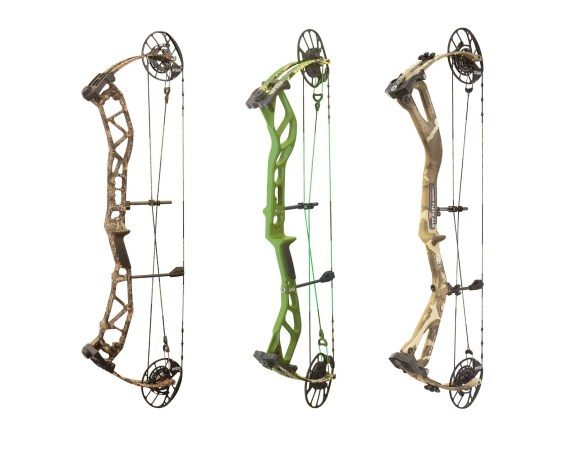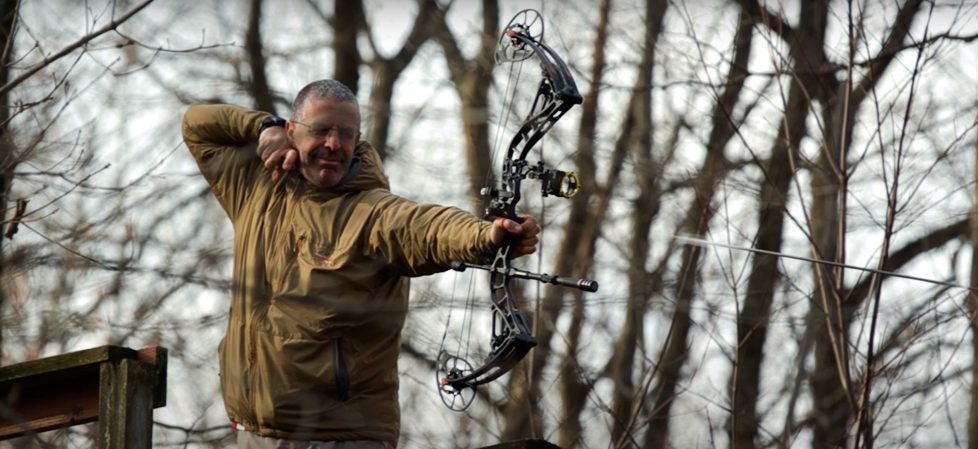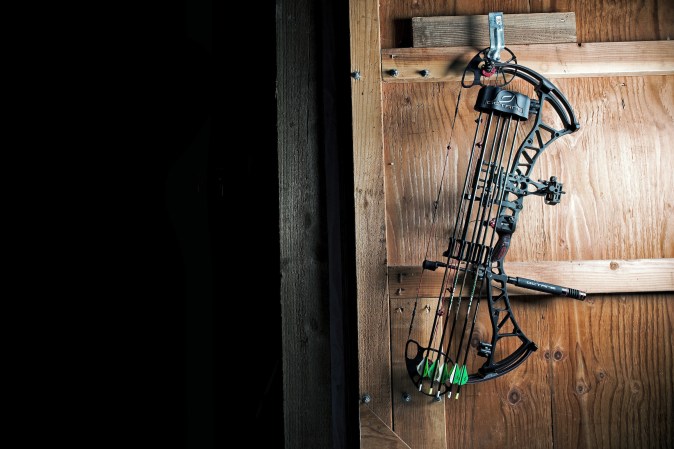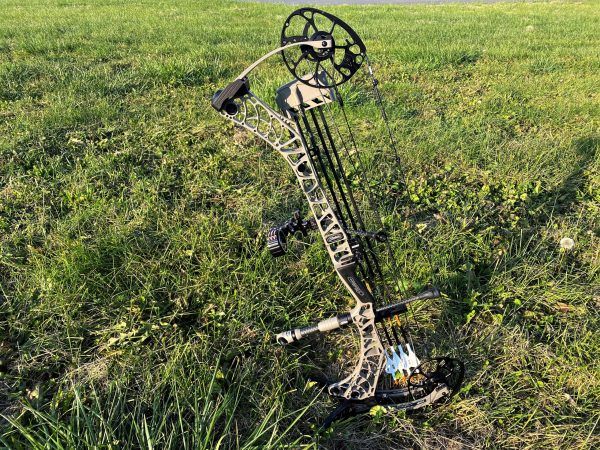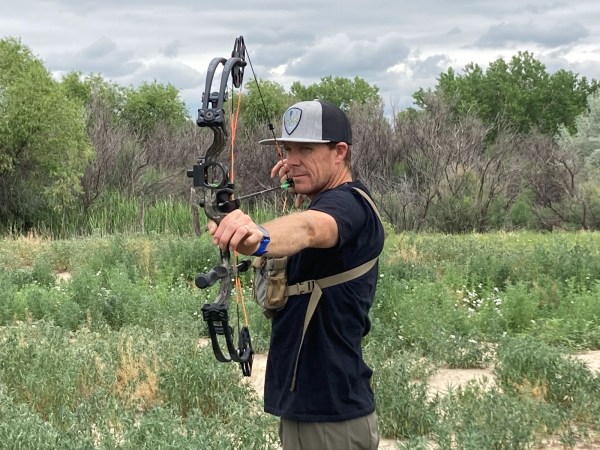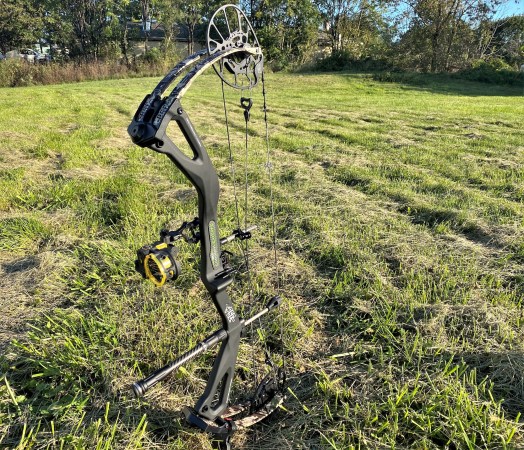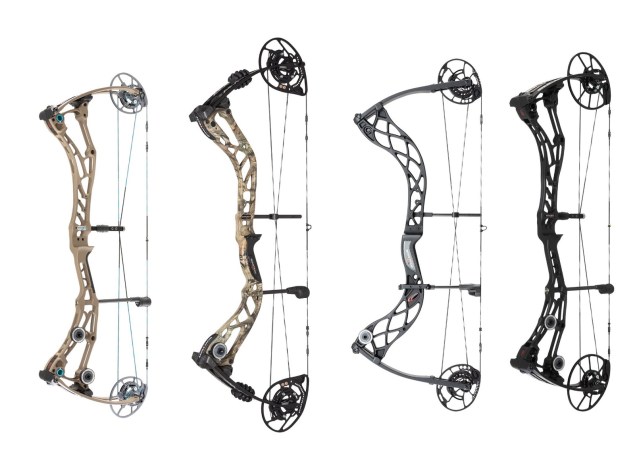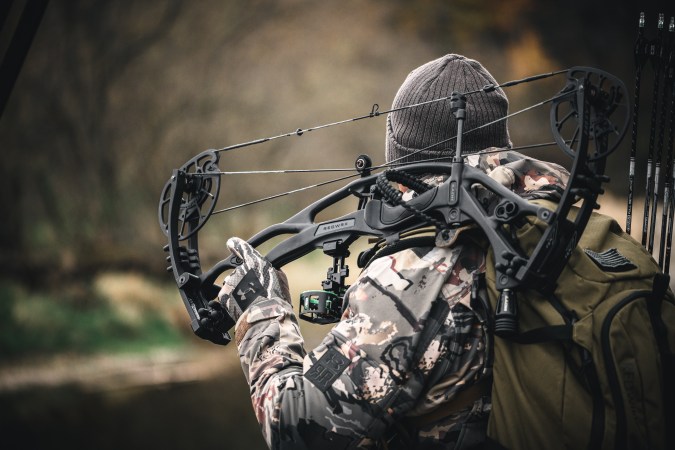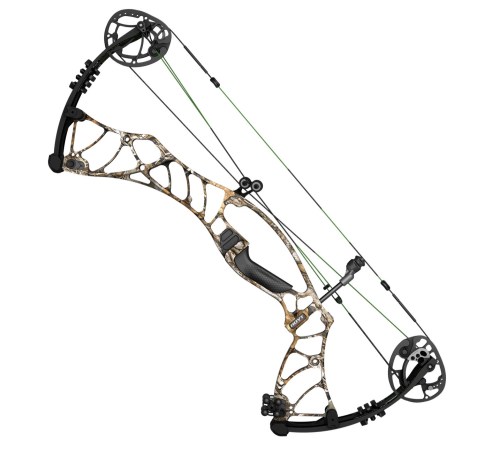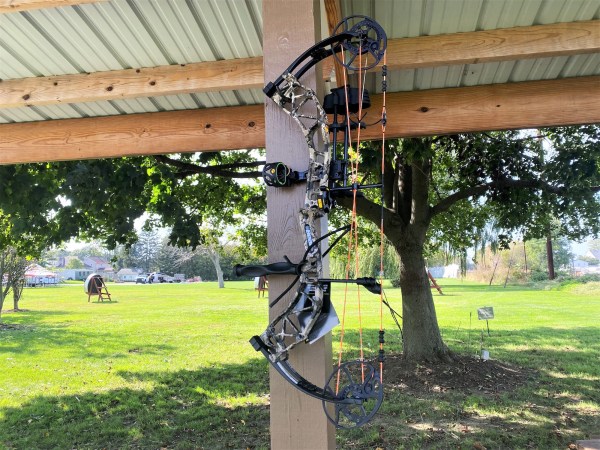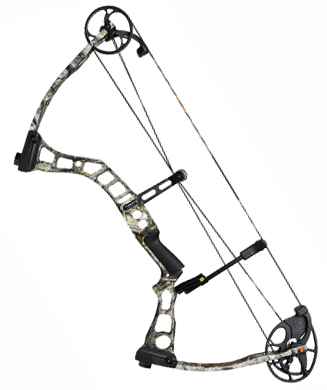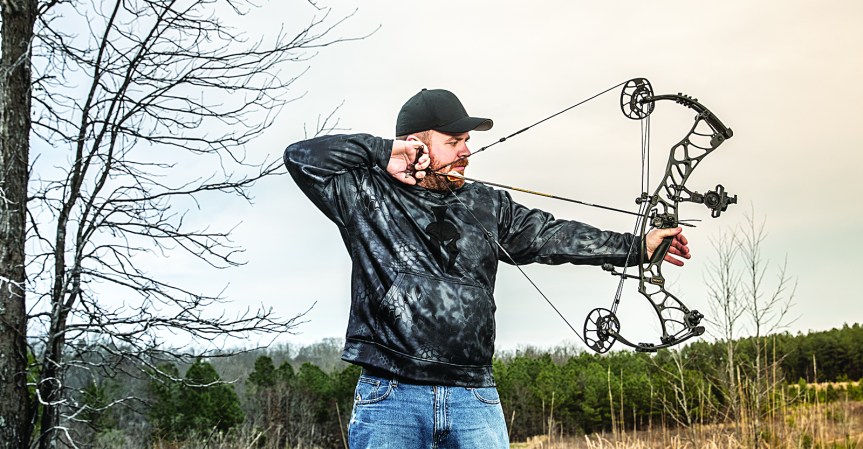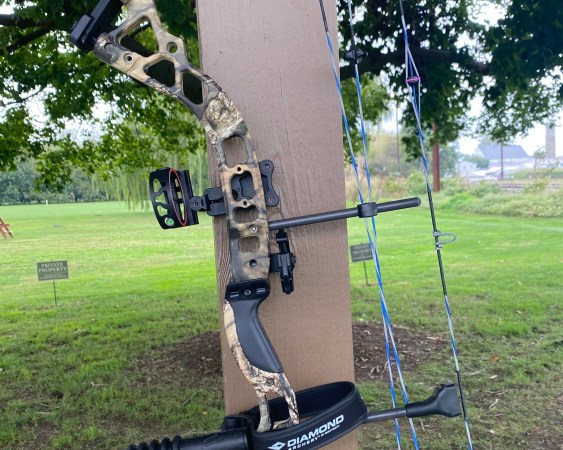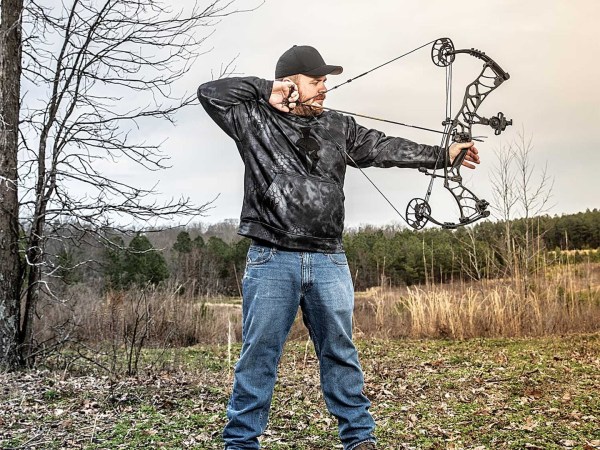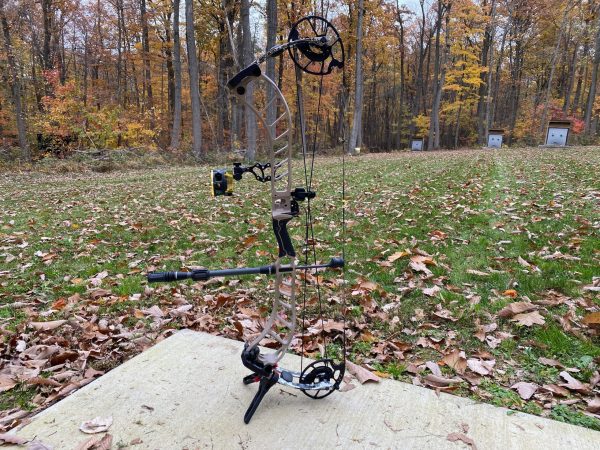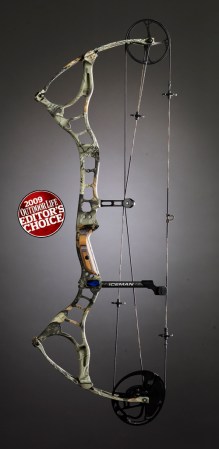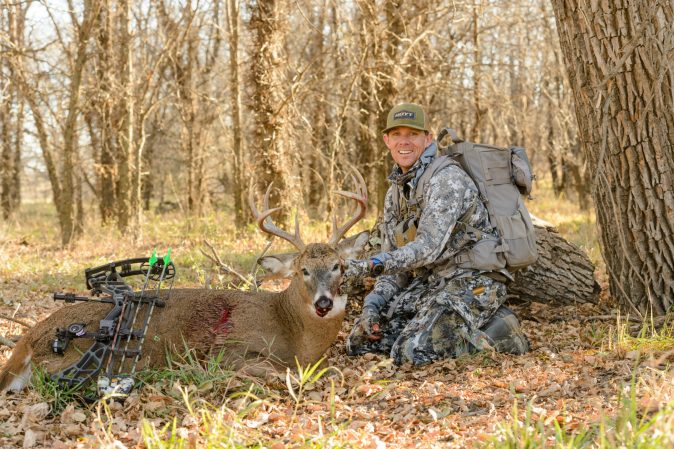We may earn revenue from the products available on this page and participate in affiliate programs. Learn More ›
Everything is more expensive these days, and that includes flagship compound bows. These are the bows that major manufacturers promote as their latest and greatest—and they keep creeping up in price. Five years ago, Hoyt raised eyebrows with the price of their Carbon RX-1, which had an MSRP of $1,549 and cost about $500 more than the other flagship bows at the time. This year, the average cost of the flagship bows in our Bow Test 2023 is about $1,500. The most expensive bow in this year’s test goes for $1,800—that’s without a rest, sight, stabilizer, or any other accessory you might want to add.
So are bowhunters really getting what they pay for when they throw down for one of these top-priced bows? Or are we just buying the marketing hype—like paying an extra $20 for that Nike swoosh on a t-shirt. What’s the real-world performance gap between an expensive flagship bow and a budget-priced bow, which typically cost about $400 to $700 (one third of the price of a flagship)?
After running all the top flagship bows and a handful of budget bows through the same testing protocol, we have some answers. Here’s how flagships and budget bows are different (or similar) when it comes to the main things that bowhunters care about: accuracy, tunability, speed, build quality, and shooting experience.
Accuracy
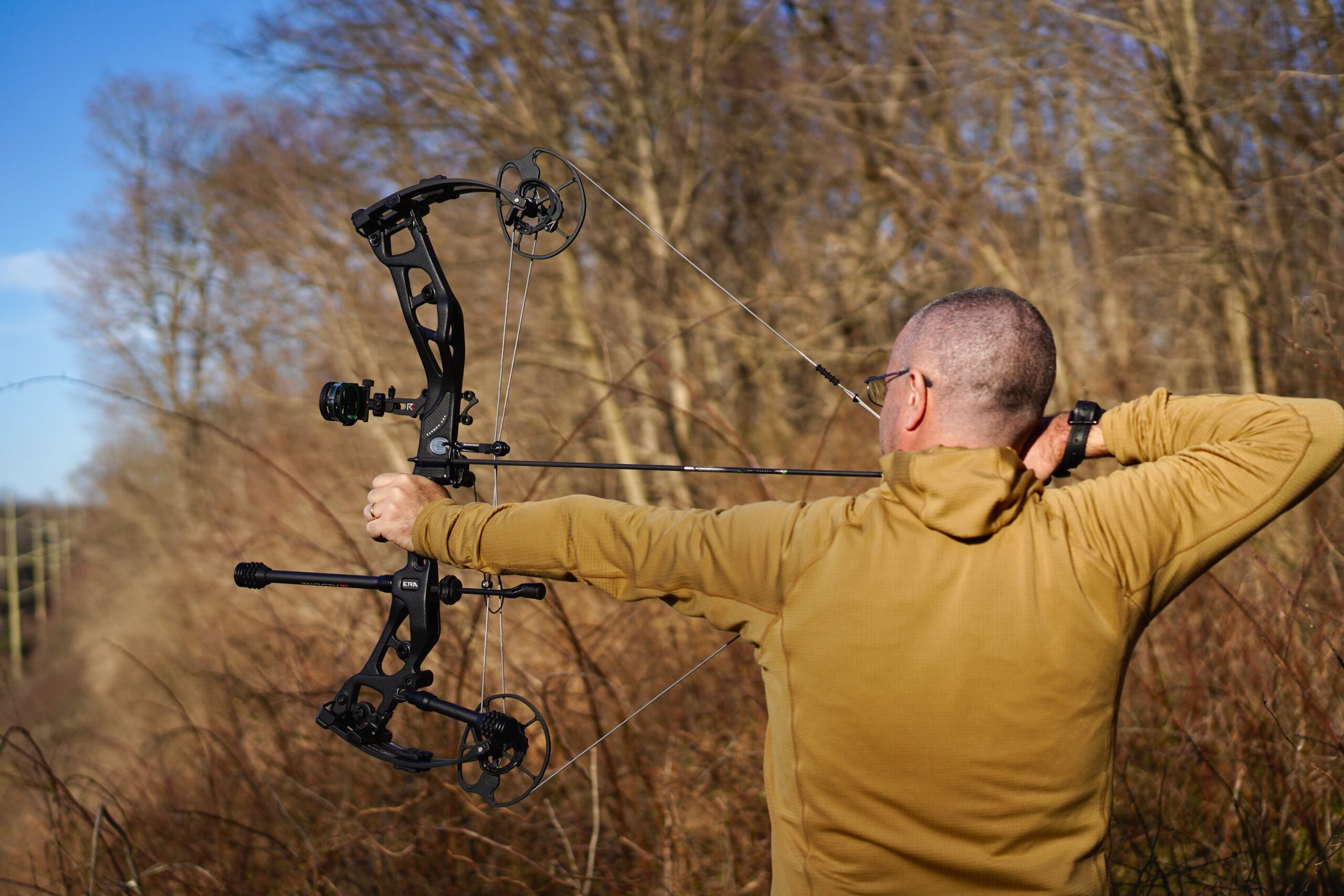
Let’s get this part out of the way first: The most important factor in the archery accuracy equation is you, the shooter. Great archers can shoot incredibly accurately with cheap bows and poor archers will still shoot poorly with even the highest of high-end bows. With that said, some bows are easier to shoot accurately than others (folks in the archery world call this “forgiveness”).
In our testing, we found that flagship bows really do deliver better field accuracy than budget bows. Over the course of several days, PJ Reily of Lancaster Archery Supply and I shot five-arrow groups from 50 yards with the new flagships and new budget bows. We carefully measured every group. For this part of the testing, we shot the bows without any stabilizers, just a rest and a site.
When the dust settled, flagship bow groups averaged 4 inches and budget bow groups averaged 6.65 inches.
A difference of 2.65 inches is substantial, but the story gets more telling when you look at the most accurate bows from each category.
Most Accurate Flagship Bows
- Elite Era: 3.18 inches
- PSE Mach 34: 3.18 inches
Most Accurate Budget bows
- Elite Terrain: 4.9 inches
- PSE Drive NXT: 5.9 inches
The Elite Terrain’s average was tightened by one 3.25-inch group shot heroically by Reilly during a stiff crosswind. But even so, that was the single best group anyone shot with a budget bow, and it was still larger than what we were averaging with the top flagship bows.
So what is it about flagship bows that makes them easier to shoot accurately? There are general characteristics that make a bow easier to shoot, like longer axel-to-axel distance. However, there are also a few more nuanced features where the flagship bows excel and the budget bows fall back.
Grip
For optimal accuracy, you want a grip that makes it easy to place your hand in the same position for every shot. Both PJ and I prefer a narrow throat and flat back with rounded but distinct edges. You also want the grip angled in a way that it doesn’t create torque in your hand while at full draw. A finish that feels grippy in the hand is also a nice feature. Flagship bows tend to have more of these details built into their grips. Budget bows often use a rubberized grip that feels comfortable in the hand, but doesn’t promote top accuracy.
Balance
Bows that are well balanced at full draw are easier to hold on target, especially when shooting at longer distances in windy conditions. Flagship bows have more effort engineered into their risers and overall design to create a well-balanced bow. You can see the results from the Mantis readings we collected at the test. The Mantis X8 is a small sensor that attaches to a bow’s riser and sends data to the Mantis app. While we could subjectively rate if a bow held steady or wobbled like a chicken on tightrope, the Mantis readings allows us to actually show you what a bow’s float pattern looks like.
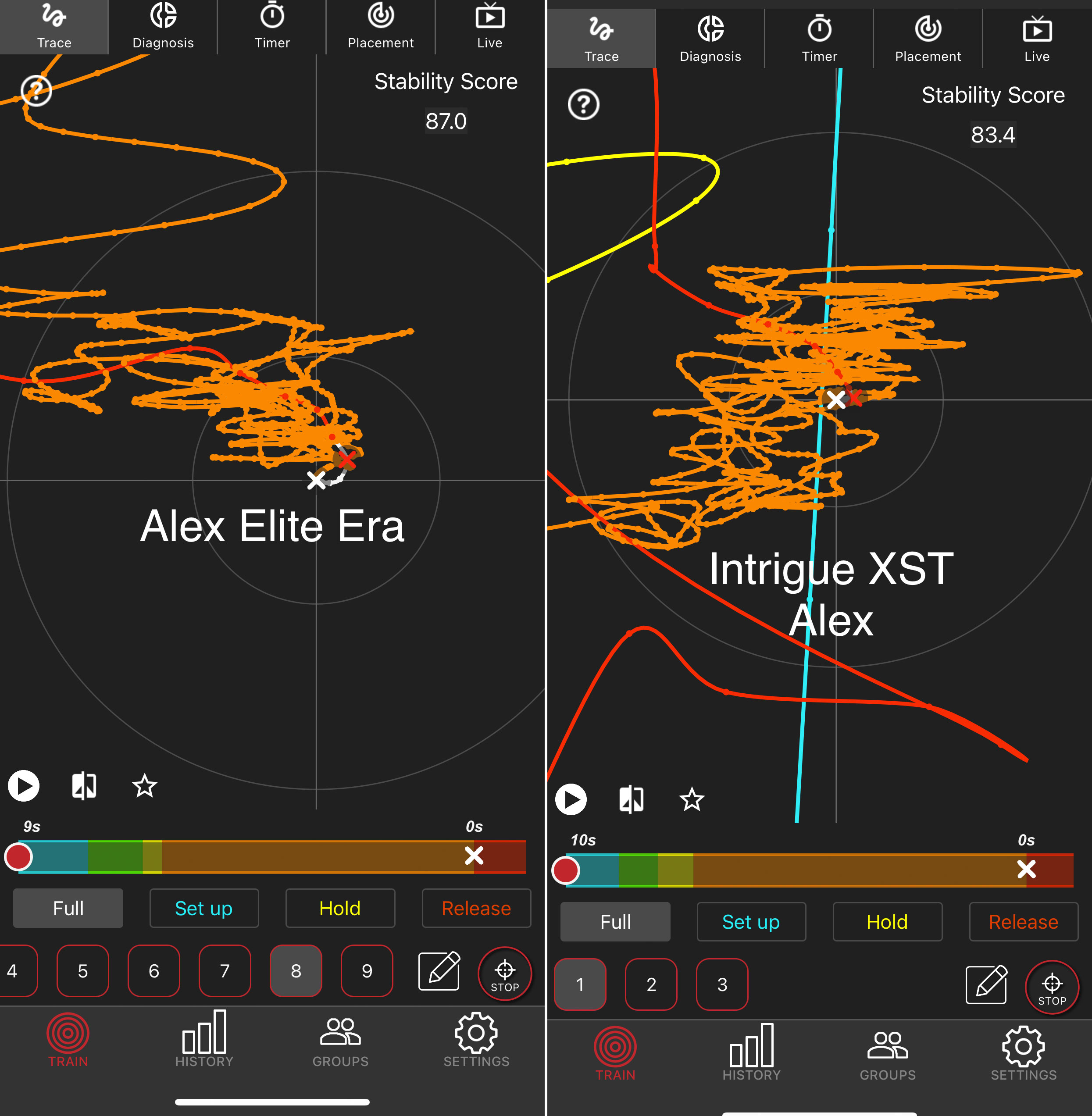
The results I got from the flagship Elite Era showed I floated momentarily high left of the target before quickly settling on the bullseye. When shooting the budget Blackout Intrigue XST I wavered high above the target and then below it drifting both left and right. I could certainly feel the difference as well. Trying to hold the XST on target felt a bit like driving my truck down an icy road.
Draw Cycle
A smooth draw cycle is an underrated element of accuracy. But consider what it feels like to draw a bow with a harsh cycle. You have to pull through a big, forceful hump and then your arm and shoulder get slammed back against the backwall. When this happens your pin wobbles all over the place. This takes extra effort to steady the bow and get on target, which makes it just a little more challenging to shoot accurately. Flagship bows, with few exceptions, tend to have more advanced cams and smoother draws.
Of course, any bow needs to be tuned in order to shoot as accurately as possible, which brings us to tuning features.
Tunability
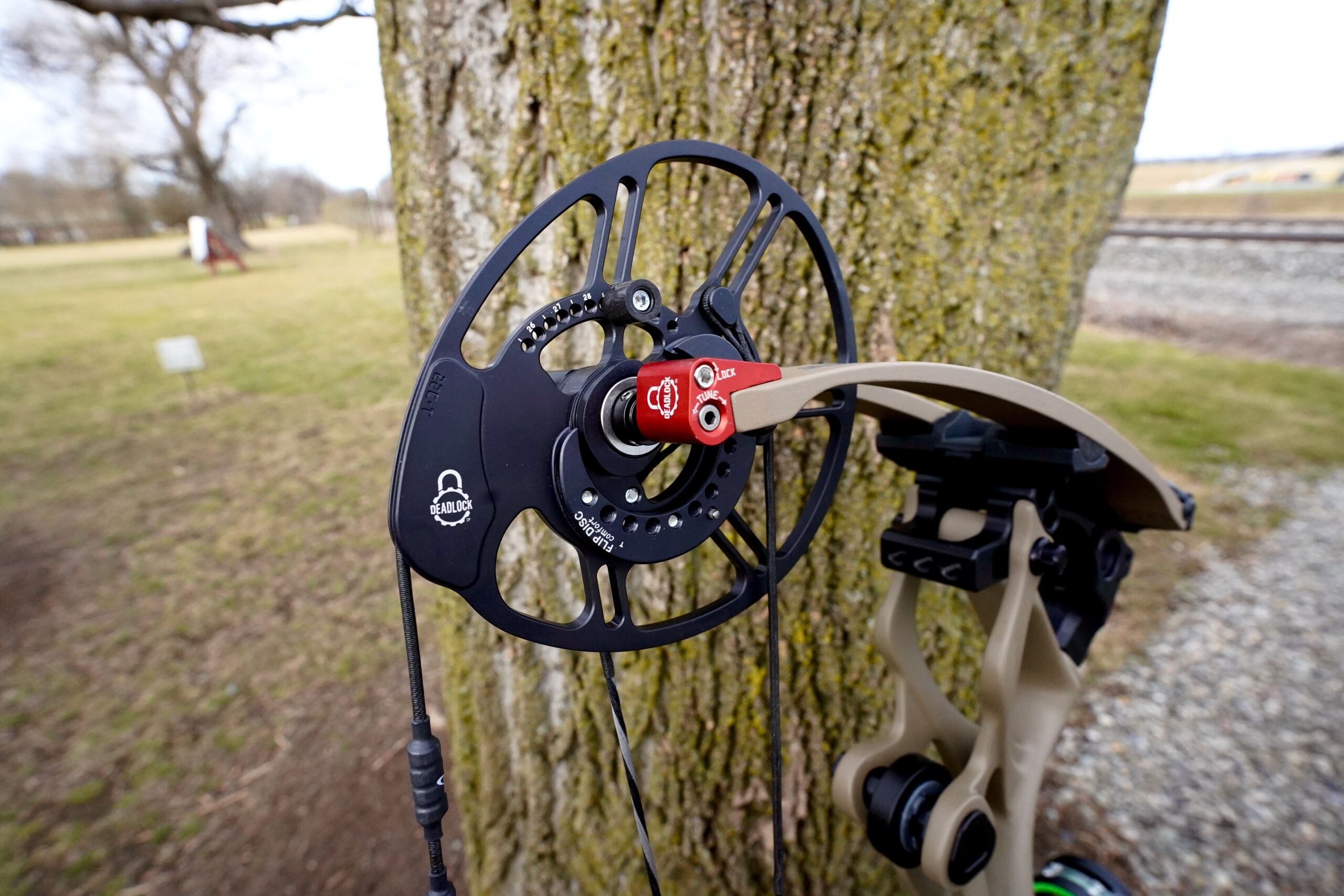
You probably won’t notice your bow’s tune until you screw a broadhead onto your arrow, especially a fixed blade broadhead. That’s when the difference between a bow that’s easy to tune and one that’s a nightmare will be most obvious. An expensive bow is going to be easy to tune for a few reasons: the risers have less flex, they have decent strings, and a lot of them come with features for easy tuning.
When a bow’s riser or axles flex, it adds inconsistency into your shot. That’s why bow companies spend a lot of money on the best aluminum and design bows with rigid risers. You’ll also see companies beefing up their axles and bearings for similar reasons. A cast magnesium riser or thin, low-quality aluminum that we see on budget bows isn’t going to be nearly as stiff. Quality strings don’t make a difference when you’re tuning, but they make a huge difference for keeping a bow tuned. Bad strings—like the ones on budget bows—will continuously stretch leaving you to constantly chase your sight marks and tune. If you’re serious about tuning and shooting, you should get a custom set of strings made by a reputable company because even the best factory strings aren’t that great.
Tuning can be done by making small adjustments to your arrow rest, but you don’t want to move it a ton from true center shot. That’s where adjusting your cam lean comes in. How you accomplish that adjustment will depend on your cam design. Flagships like the Elite Era, Bowtech Carbon One, and PSE Mach 34, all have easy ways of making micro adjustments that will help you get the best possible arrow flight. On the flip side, a lot of budget bow cams can’t be adjusted.
If you’re interested in tuning, there’s no comparison between a budget bow and a flagship. But, there’s an overlooked component to tuning, which is you. If your grip, string pressure on your face, or release are inconsistent, then you’ll never be able to tune your bow no matter the bow’s price. Make sure those key parts of archery form are squared away before diving into tuning.
Read Next: Best Broadheads of 2023
If you don’t want to mess with tuning, you can always have an archery shop setup and tune your bow the best they can. Then you can see if a fixed blade will fly well or you can just use a mechanical broadhead. —S.E.
Speed
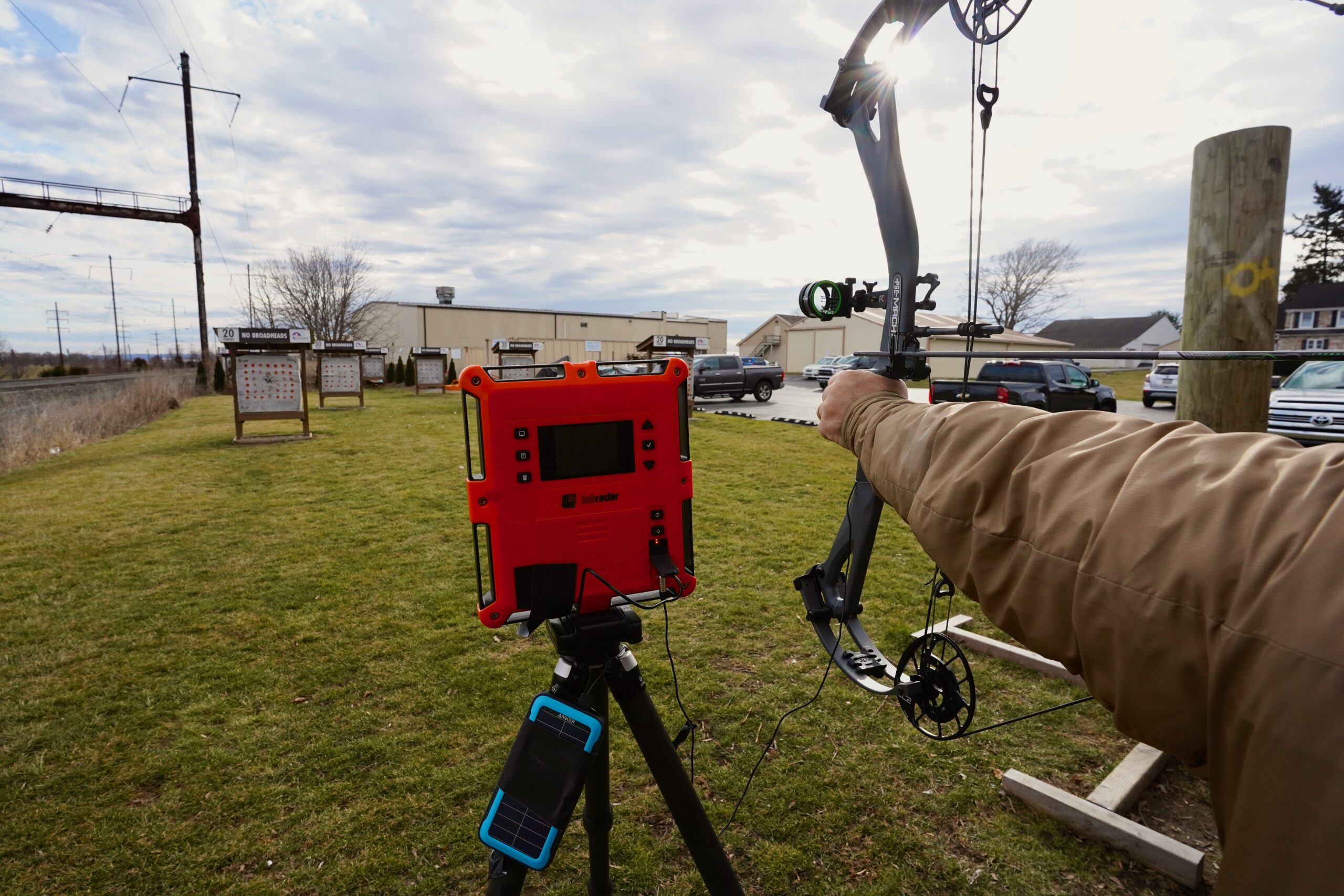
The arrow speed that a bow is able to generate is often misunderstood by bowhunters. The speed bow fanboys often over emphasize its importance, the heavy-arrow believers tend to act like even considering speed is foolish. Most real-world bowhunters should fall somewhere in the middle. A faster bow is capable of flinging arrows (even heavy ones) on a flatter trajectory and attaining more theoretical penetration than a slower bow, all other variables being equal. But speed is not the most important feature of a bow.
With that in mind, in the speed category flagships do win the day, though not as handily as you might think. Our flagship bows averaged a speed of 274.7 feet per second. Budget bows averaged 260.75 feet per second. The fastest flagship was the Darton Prelude at 286.3 fps and the fastest budget bow was the Elite Terrain at 270 fps.
To get our speeds, we shot Easton Axis 5mm shafts in a 350 spine cut to 28.75 inches with a 100-grain field point. The arrows weighed 420 grains overall. Bows were shot with an approximate 60-pound draw weight and 29-inch draw length. We used a LabRadar doppler chronograph to measure three shots from each bow. We then averaged those three recorded speeds for the final spec.
It’s important to remember that everything from a bow’s tune to the weight of the peep can affect speed. So the speeds listed are meant to provide reference points, not the final word on a bow’s speed. In other words, speed is relative.
The fastest budget bow was right on par with average flagship bows. However the slowest budget bow (the Intrigue XST at 244 fps) was well behind the slowest flagship (PSE Mach 34 at 264 fps).
Build Quality
Most of the time, flagship bows look cooler than budget bows. They have nicer finishes, better graphics, cooler paint schemes, and sexier lines. But build quality is about more than just looks. It’s also about materials used and how well all the pieces are put together. As mentioned in the tuning section, flagship bows tend to use higher-quality riser material. Several flagships (three in our test) utilize carbon risers, which typically makes the bow lighter, more rigid, and more expensive.
However there are bows in the budget category with a high level of build quality. The PSE, Elite, and Bear budget bows all earned great build quality scores (four out of five points or higher). The Elite Terrain did especially well in this category, proving that a more affordable bow can look and function just as well as expensive bows.
Shot Experience
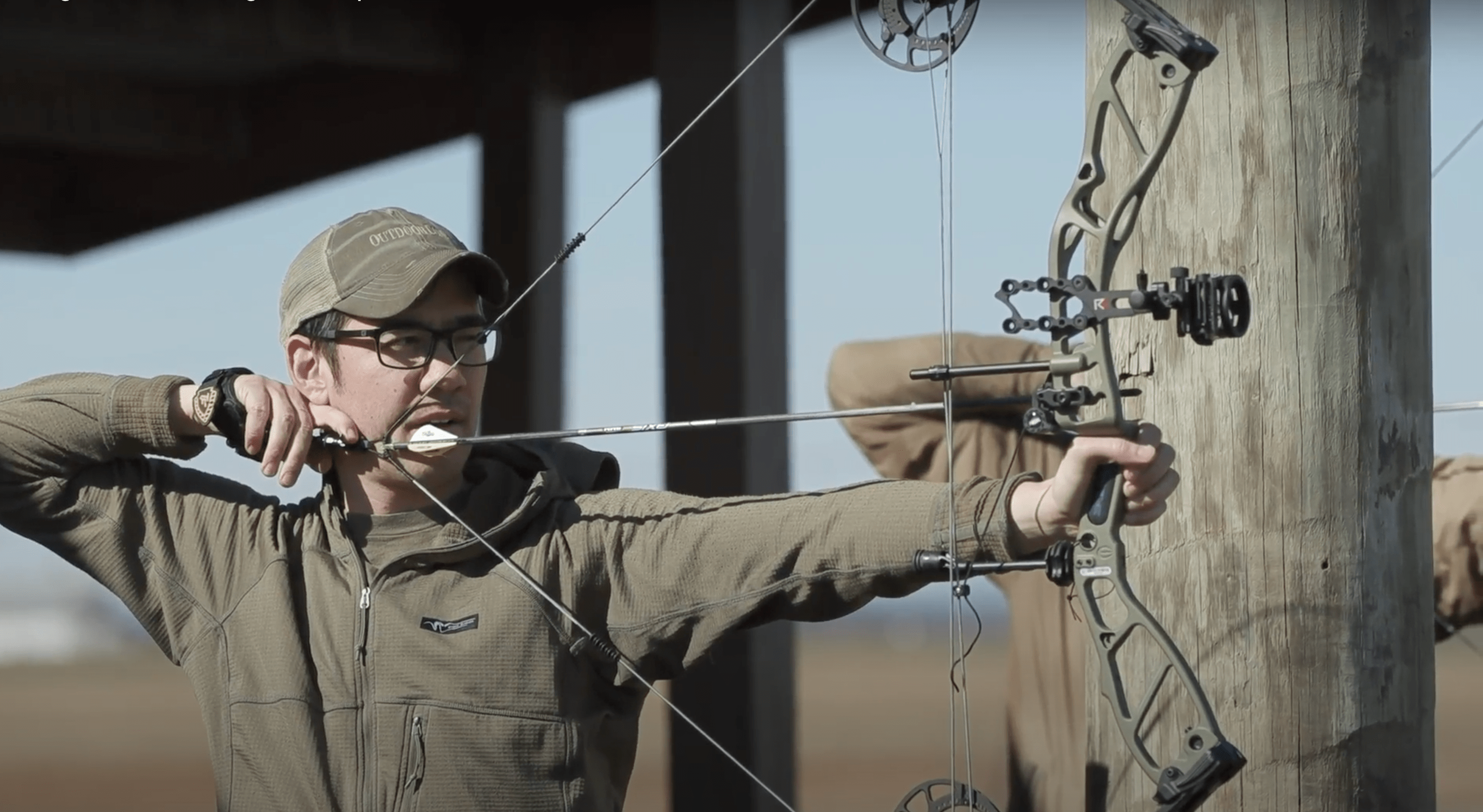
This is a subjective category that we didn’t include specifically in our testing. I’d define it as “how fun the bow is to shoot.” Features that make a bow a joy to shoot include smooth draw cycle, forgiveness (somehow even your “bad” shots are good), and minimal vibration or thump post-shot. In other words, it’s a culmination of all the previous factors.
On the flagship side, all of our top three bows—the Elite Era, Mathews Phase 4, and PSE Mach 34—were simply a blast to shoot. Upon shooting the Era, I literally chuckled to myself, admiring the wonder of engineering I held in my hand.
Budget bows don’t offer that same level of shooting experience. However, a few of the bows were close. The Elite Terrain was definitely a fun bow to shoot. The Bear Legend had one of the smoothest, and easiest draws in the test (even including the flagships). With stabilizers, you would have no problem dampening some of the vibration the Bear generated post-shot.
Should You Buy a Budget Bow or Flagship Bow?
If you want to become a diehard archer, shoot targets and game at long distances, tune your own gear, and be the very best compound shooter you can be, then you should buy a flagship bow. That might mean shooting a budget bow for a while and then moving up to a flagship after a few years of saving. That’s just fine. Ultimately, a flagship bow will give you the level of performance you’re searching for. Keep in mind you’ll need consistent archery practice (and probably coaching) to tap into the full potential performance of a flagship bow.
A mid-priced budget bow like the Elite Terrain, which costs $700, is a good option for a serious bowhunter who wants a quality piece of equipment but can’t afford a full flagship or simply doesn’t want to spend that kind of money on a bow. The Elite Terrain doesn’t give up much in performance to bows that cost several hundred dollars more.
A budget bow like the Bear Legend is a good option for a more casual archer. If you want to shoot during the summer and bowhunt during the fall—but aren’t planning to make archery your life’s pursuit—then you can’t go wrong with a bow that costs $460 off the rack and is actually fun to shoot. You’ll just have to be more selective with your shots when hunting.
READ NEXT: Best Bows for the Money
So is a flagship worth it? If you’re obsessed with squeezing every ounce of archery potential out of your gear and yourself, then yes, it definitely is. If you’re happy to sling soft-ball sized groups at 30 yards and only shoot at deer inside that range, then no, a spendy flagship is probably not for you.

